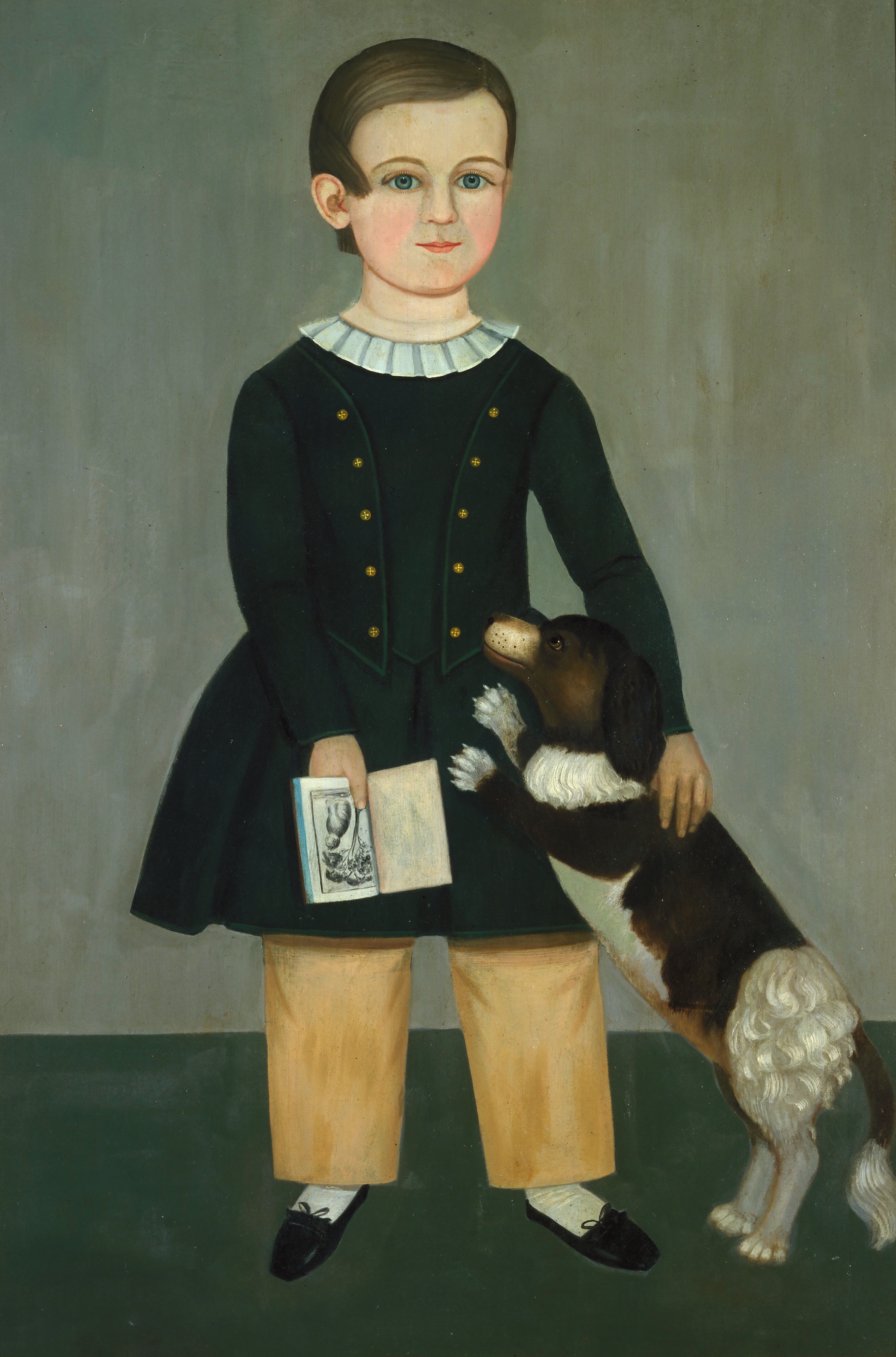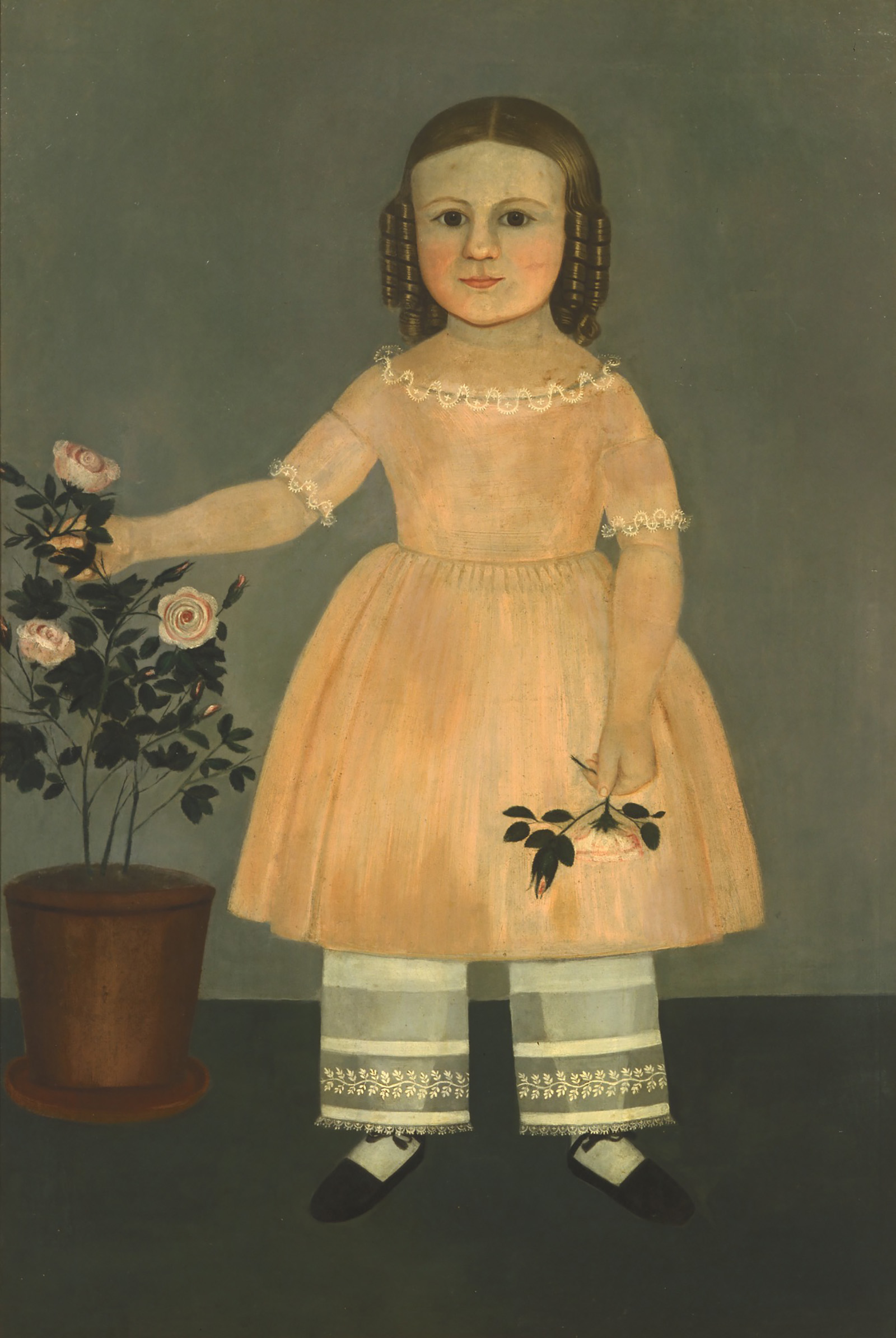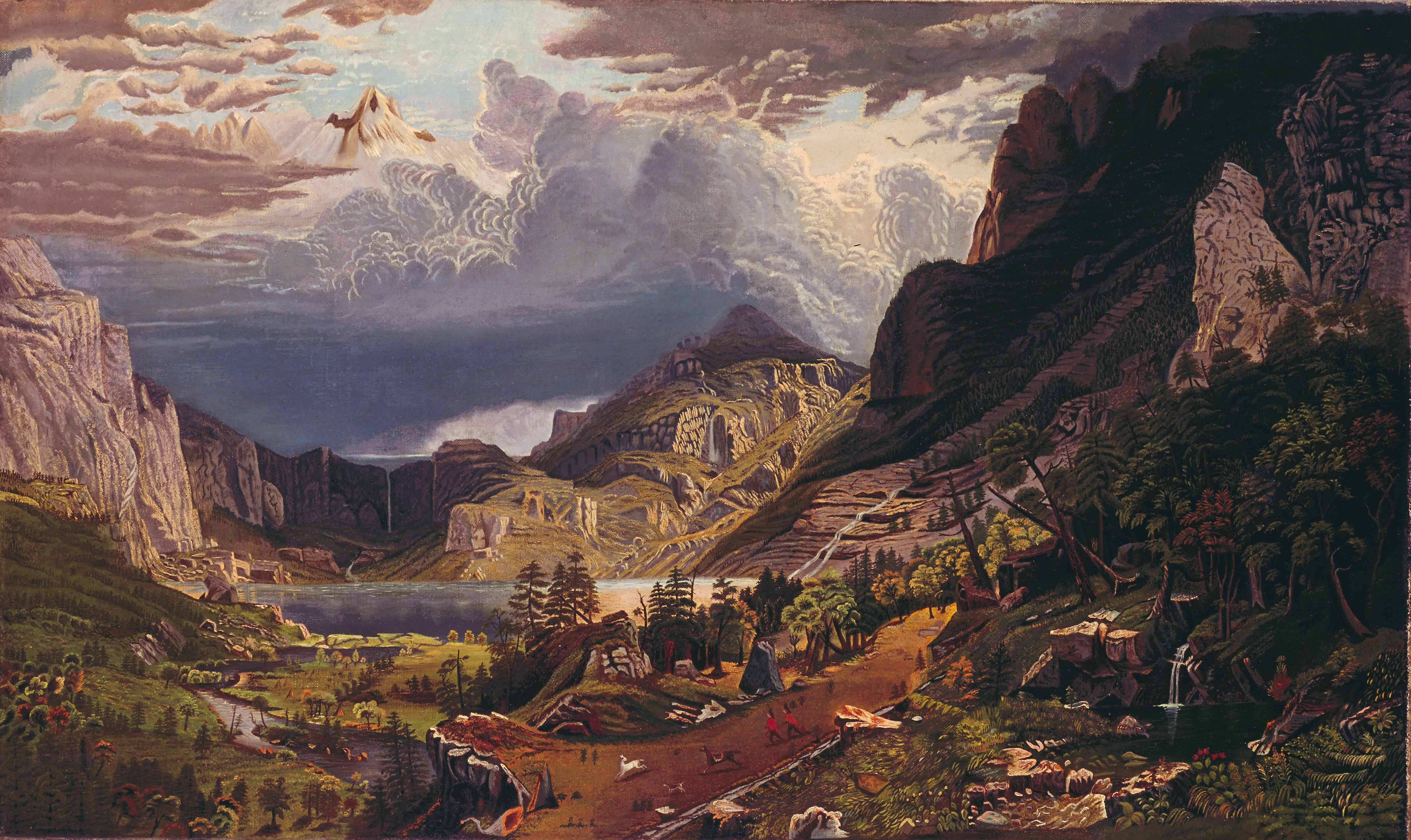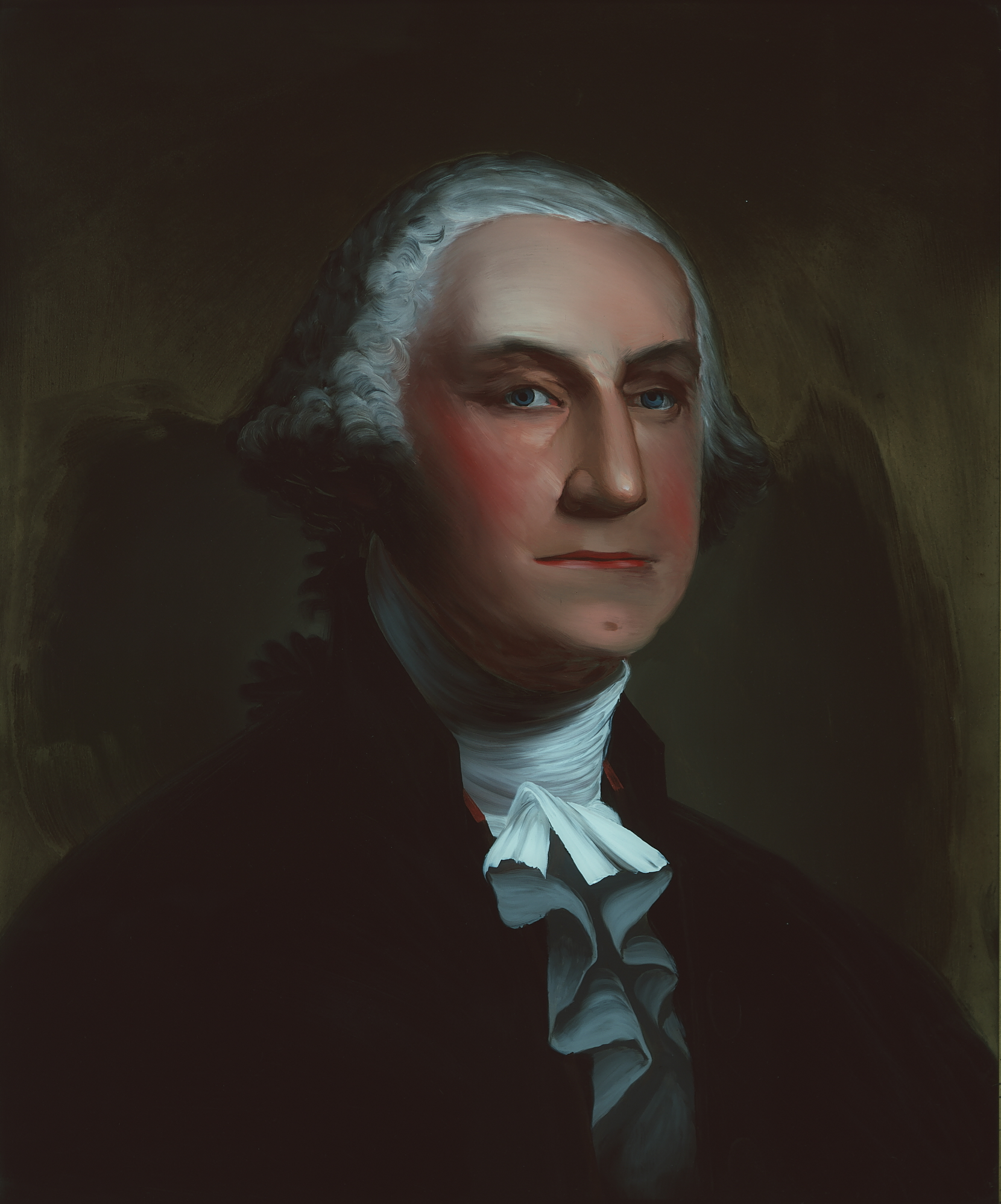Isaac Josiah and William Mulford Hand
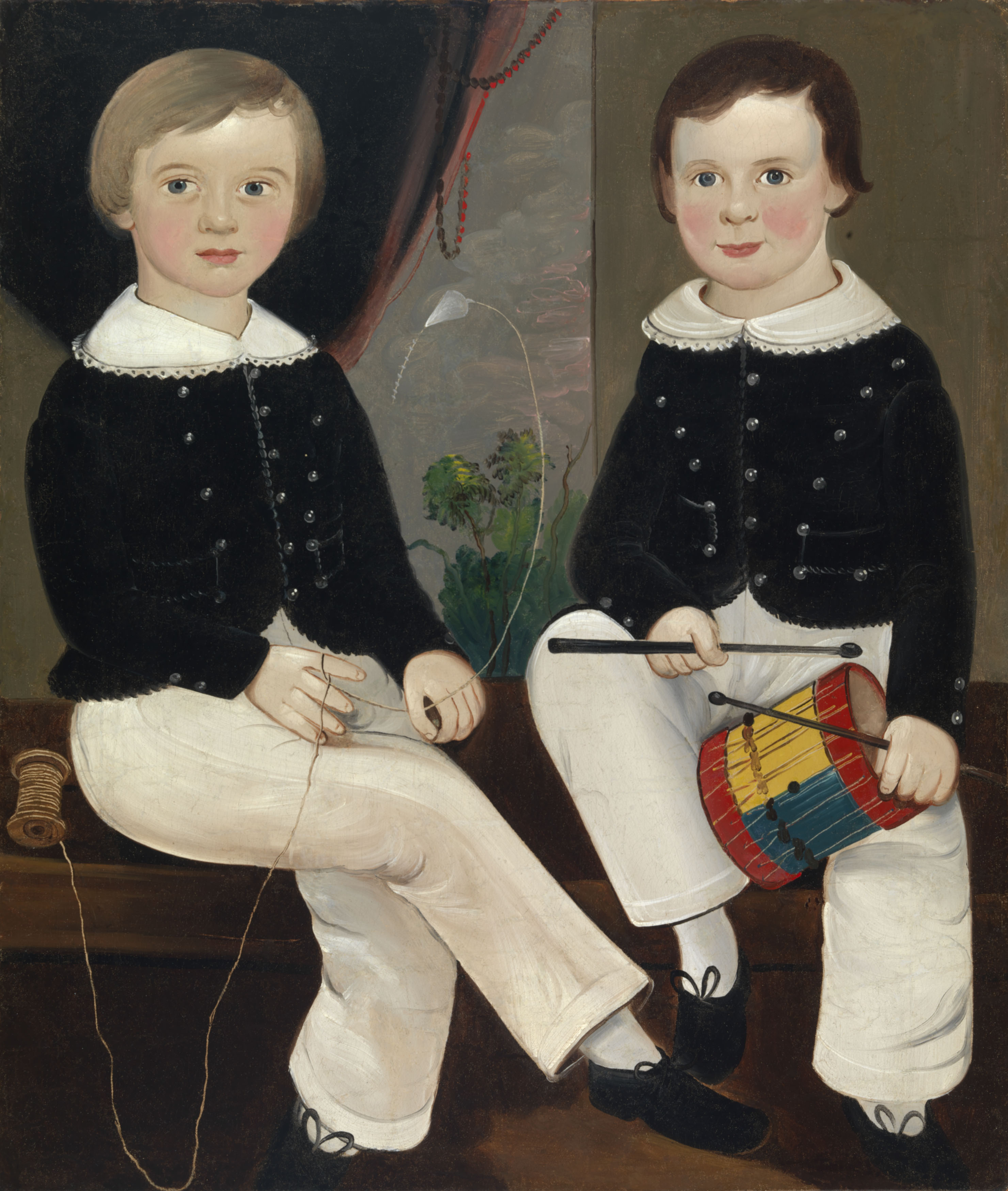
What are the joys of childhood?
Isaac and William were descendants of John Hand, who emigrated from England to Lynn, Massachusetts, in 1635. Both sons were born in Lynn, and this double portrait celebrates the joys of childhood in early America. While many early American portraits of children included toys, Prior depicted the Hand brothers and their kite and drum with particular delight. The landscape view, with its brushy, highlighted trees and pink sunset sky, is characteristic of Prior’s portrait commissions.
